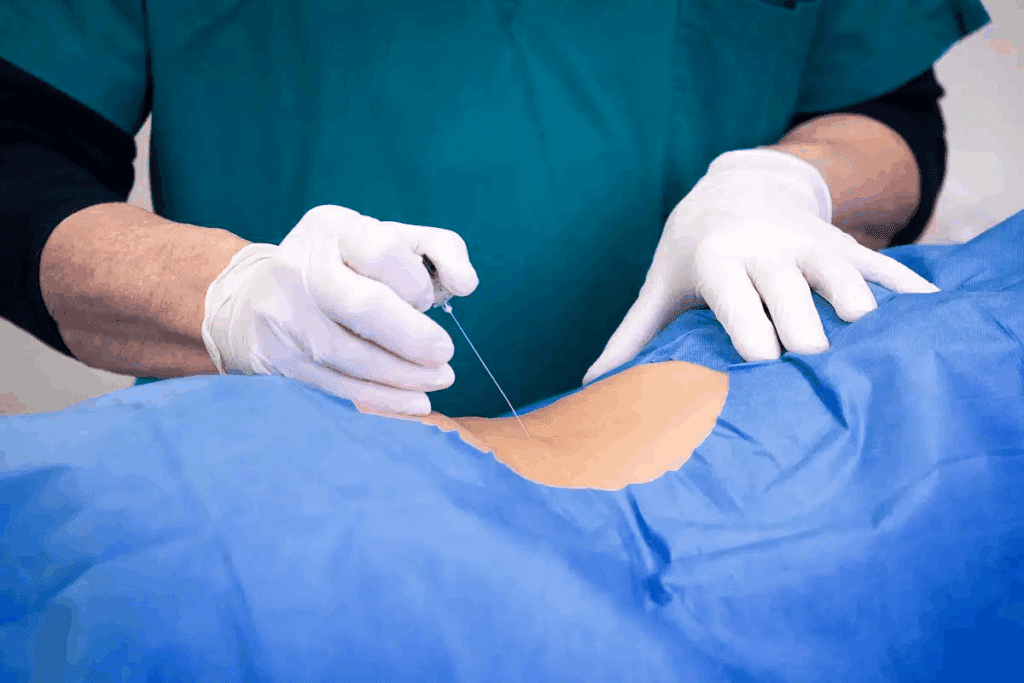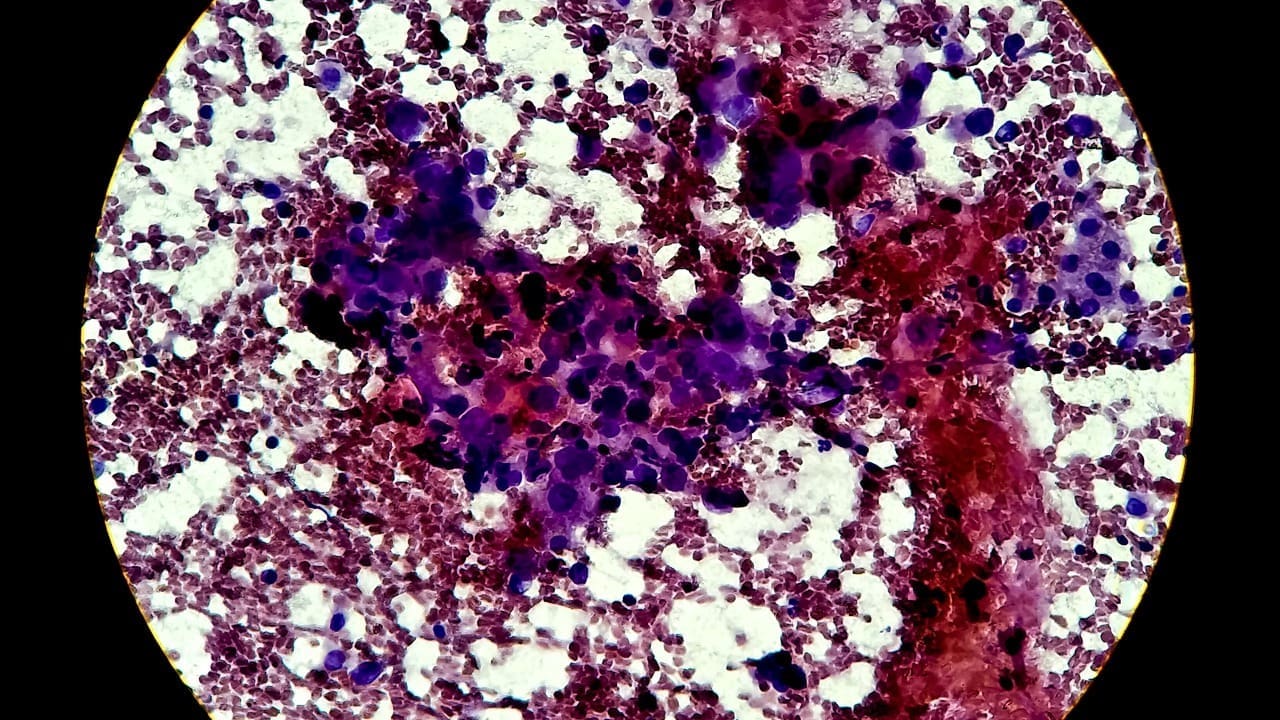Last Updated on November 26, 2025 by Bilal Hasdemir

Epidural steroid injections are a widely used treatment for herniated disc pain. At Liv Hospital, we provide advanced spine care using the latest technology and evidence-based methods to ensure the best outcomes for our patients.
An ESI for herniated disc helps reduce inflammation and relieve pressure on spinal nerves, offering significant pain relief and improved mobility. This minimally invasive treatment can be an important step in managing back pain without surgery.
Understanding how an ESI for herniated disc works allows patients to make informed decisions about their care. At Liv Hospital, our experts are dedicated to helping you find safe, effective, and lasting relief from spine-related pain
Key Takeaways
- Epidural steroid injections are a common treatment for herniated discs.
- These injections aim to reduce inflammation and relieve nerve pain.
- Liv Hospital combines advanced innovation with trusted treatment protocols.
- Understanding the benefits and risks is key for effective treatment.
- Epidural steroid injections can offer safe and effective relief for herniated disc pain.
Understanding Herniated Discs and When Injections May Help

It’s important to know about herniated discs to find the right treatment. A herniated disc happens when the soft center of the disc leaks out. This can press on nerves and cause pain.
The Anatomy of Disc Herniation
The spine has discs that cushion the vertebrae. When a disc herniates, the soft center bulges out. This can irritate nerves and cause pain, numbness, and weakness in the back and legs.
- The lumbar region is the most common area for herniated discs due to the heavy load it bears.
- Disc herniation can result from wear and tear, injury, or sudden strain.
Symptoms That May Indicate a Herniated Disc
The symptoms of a herniated disc vary based on where and how bad it is. Common signs include:
- Lower back pain that may spread to the hips and legs.
- Numbness or tingling in the affected limb.
- Muscle weakness in areas affected by the compressed nerves.
When ESI Becomes a Treatment Option
Epidural steroid injections (ESI) are considered when other treatments don’t work. ESI involves injecting steroids around the spinal cord to reduce inflammation and pain.
We suggest ESI when:
- Symptoms don’t get better with other treatments.
- There’s significant nerve compression causing severe pain or neurological problems.
ESI for Herniated Disc: How This Treatment Works

It’s important to know how epidural steroid injections work for herniated discs. These injections are a key treatment for pain from herniated discs.
The Science Behind Epidural Steroid Injections
Epidural steroid injections put corticosteroids near the spinal cord. The NCBI Bookshelf says this reduces swelling and pain. The epidural space is a fat-filled area outside the dura mater, a protective membrane surrounding the spinal cord.
Anti-inflammatory Mechanism of Action
The corticosteroids in ESIs fight inflammation. They stop the production of inflammatory cytokines and reduce blood vessel permeability. This action is key in easing nerve pressure from herniated discs.
Realistic Expectations for Pain Relief
Epidural steroid injections can greatly reduce pain, but it’s important to have realistic hopes. The amount and length of pain relief vary. Many factors affect the outcome, like the herniation’s severity and the patient’s health.
Knowing how epidural steroid injections work helps patients make better choices. It’s also vital to talk about what to expect and any worries with a healthcare provider.
Types of Epidural Injections for Slipped Discs
For those with slipped discs, knowing about epidural injections is key. These injections help manage pain from disc herniation. They are a common treatment option.
Interlaminar Epidural Steroid Injections
Interlaminar injections put steroids into the epidural space. This is done through the space between two vertebrae. It’s great for treating pain from central disc herniations.
Key Benefits: Hits the pain source right on, cuts down on swelling.
Caudal Epidural Injections Technique
Caudal injections put medication into the caudal space. This area is near the sacral hiatus. It’s good for long-term pain in the lower back and legs.
Procedure: Steroids and anesthetics are injected into the caudal space.
Transforaminal Epidural Steroid Injections
Transforaminal injections are top-notch for radicular pain from disc herniation. The medication goes in through the neural foramen. This is where the nerve root exits.
| Type of Injection | Technique | Application |
| Interlaminar | Injecting steroids between adjacent vertebrae | Central disc herniations |
| Caudal | Injecting into the caudal epidural space | Chronic lower back and leg pain |
| Transforaminal | Injecting through the neural foramen | Radicular pain, nerve root inflammation |
The Procedure: What Happens During a Cortisone Shot for Herniated Disc
If you’re dealing with herniated disc pain, a cortisone shot might help. But what happens during the procedure? We’ll walk you through the steps, from getting ready to aftercare.
Pre-Procedure Preparation and Evaluation
Getting ready for a cortisone shot is key. First, you’ll get a medical check to see if it’s right for you. We look at your health, how bad the herniated disc is, and any treatments you’ve tried before.
Tell your doctor about any medicines you’re taking. This includes blood thinners, as they might need to be changed or stopped to avoid bleeding.
Step-by-Step Injection Process
The actual shot is quick and has a few important steps:
- Positioning: You’ll lie on your stomach on an X-ray table.
- Imaging Guidance: We use imaging to make sure the needle goes in right.
- Needle Placement: The needle goes into the space around your spinal cord.
- Cortisone Injection: The cortisone is then injected.
Immediate Post-Procedure Care
Right after, immediate post-procedure care is key for a good recovery. You’ll be watched for any quick reactions or problems. Here’s what to do:
- Rest for the rest of the day.
- Don’t do anything too hard for a few days.
- Use ice on the spot if it hurts.
You might feel some pain relief right away. But it can take a few days for the cortisone to fully work.
| Procedure Step | Description | Care Instructions |
| Pre-Procedure | Medical evaluation and medication adjustment. | Inform doctor about current medications. |
| Injection Process | Positioning, imaging guidance, needle placement, cortisone injection. | Follow doctor’s instructions for positioning. |
| Post-Procedure | Monitoring for reactions or complications. | Rest, avoid strenuous activities, apply ice if necessary. |
How Often Can You Get Epidural Steroid Injections?
Epidural steroid injections help many with herniated discs. But, there are rules on how often you can get them. It’s important for patients to know these rules to make good choices about their treatment.
Medical Guidelines on Injection Frequency
Doctors say epidural steroid injections should be used carefully. They suggest getting these injections no more than three to six times a year. This rule helps avoid risks from too many injections.
We look at several things to decide how often to give injections. We consider how bad your symptoms are, how you’ve reacted to past injections, and your overall health.
Recommended Intervals Between Treatments
How long to wait between injections is also key. Usually, it’s weeks or months. The exact time depends on your condition and how well you’re doing with the treatment.
- Initial Assessment: The first injection comes after a detailed check-up.
- Follow-Up: Next injections are planned based on how you’re doing.
- Maximum Limit: There’s a limit to how many injections you can have to avoid bad effects.
Why Limiting Steroid Shots in Your Back Is Important
It’s important to limit steroid shots to avoid problems. Too many shots can cause issues like:
- Systemic Steroid Effects: Too much steroid can affect your whole body.
- Local Tissue Changes: Doing the same spot too many times can harm the tissue.
- Infection Risk: Each shot carries a risk of getting infected.
By sticking to the guidelines, we can lower these risks. This makes sure the treatment works well.
In short, while epidural steroid injections help with herniated disc pain, it’s key to follow the medical rules. This helps get the most benefit and keeps risks low.
Effectiveness of Epidural Injections for Herniated Discs
Epidural steroid injections are a good option for those with herniated discs. They help reduce pain by putting corticosteroids near the spinal cord. This eases pressure on nerves and cuts down inflammation.
StatPearls says these injections can give quick pain relief. Some people feel better for months. A study in the Journal of Neurosurgery: Spine agrees, saying many see short-term symptom improvement.
Short-Term Pain Relief Duration
How long pain relief lasts varies. Some feel better right away, while others take days. Relief can last weeks to months.
A Spine Journal study found relief takes 2-3 days on average. But it can range from 1 to 14 days. This shows the need for personalized care.
Long-Term Outcomes and Success Rates
While injections help short-term, their long-term success is less clear. Some need more than one injection to keep feeling better. A European Spine Journal review found mixed results on long-term benefits.
Success rates vary widely. They can be between 30% and 90%. This depends on the injection method, herniation severity, and patient health.
Patient Factors That Influence Treatment Success
Many things can affect how well injections work. These include herniation severity, other spinal issues, overall health, and past treatment responses.
A Pain Medicine study found better results for contained herniations. Smoking, obesity, and mental health also play a role. This highlights the importance of a holistic approach to treatment.
“The effectiveness of epidural steroid injections in managing lumbar disc herniation is influenced by a complex interplay of clinical, radiological, and patient-related factors.”
Potential Risks and Side Effects to Consider
Epidural steroid injections can help with herniated discs. But, it’s important to know the possible risks and side effects. These can range from mild to serious.
Common Temporary Side Effects
Most people do well with these injections. But, some might feel:
- Temporary increase in pain
- Headache
- Nausea
- Facial flushing
- Difficulty sleeping
- Temporary numbness or weakness
These effects are usually mild and go away in a few days. Following your doctor’s care instructions can help.
Rare but Serious Complications
Though rare, serious problems can happen. The expert lists:
- Infection
- Nerve damage
- Spinal cord injury
- Allergic reactions to the injected medications
- Bleeding complications
Talking to your healthcare provider about your risks is key.
Cumulative Risks of Multiple Injections
Getting multiple injections can have long-term effects. While they help manage pain, there’s a limit. Risks include:
- Cumulative steroid exposure, potentially leading to systemic side effects
- Increased risk of spinal structural changes
- Potential for adrenal suppression
Guidelines suggest no more than 3-4 injections a year. This can change based on your situation and the condition being treated.
Knowing about these risks and side effects is key to making good choices. Always talk to a healthcare professional about the benefits and risks for you.
Complementary Treatments to Enhance ESI Effectiveness
To get the most from epidural steroid injections, adding other treatments can help. These therapies work together with the injections to offer better relief and results for herniated disc patients.
Physical Therapy and Rehabilitation
Physical therapy is key after getting epidural steroid injections. It helps make the muscles around the spine stronger. It also improves flexibility and posture. We suggest patients see a physical therapist to create a plan that meets their needs.
Key components of a physical therapy program may include:
- Stretching exercises to improve flexibility
- Strengthening exercises to support the spine
- Postural education to reduce strain on the back
- Low-impact aerobic exercises to improve overall fitness
Lifestyle Modifications for Disc Health
Changing your lifestyle can also help your discs and make injections work better. We recommend:
Maintaining a healthy weight is key, as extra weight strains the spine. Regular exercise, like walking or swimming, keeps the spine mobile. Proper lifting techniques and ergonomic workspace setup also help avoid more damage.
When to Consider Alternative Interventions
While injections and other treatments help many, some might need something else. We look at how severe the symptoms are, overall health, and past treatments to decide the best option.
Alternative treatments could be:
- Minimally invasive surgical procedures
- Spinal decompression therapy
- Chiropractic care
- Advanced pain management techniques
It’s important for patients to talk with their healthcare provider to find the right treatment for them.
Conclusion: Making Informed Decisions About Epidural Injections for Disc Herniation
Epidural steroid injections are a common treatment for herniated discs. They help relieve pain and reduce inflammation. Understanding the procedure and its benefits and risks is key to making good choices about your care.
Before getting epidural steroid injections, talk to your healthcare team. They can decide if this treatment is right for you. They’ll look at how severe your herniation is and your overall health.
Epidural steroid injections can help manage pain and improve your life. But, it’s important to think about the risks and other treatments too. Things like physical therapy and changing your lifestyle can make these injections work better.
By looking at all the information and talking to your healthcare team, you can make smart choices about epidural steroid injections. This way, you can actively manage your disc herniation.
FAQ
How often can you get epidural steroid injections for a herniated disc?
We suggest getting injections every few weeks to a few months apart. This helps avoid too many risks.
What are the different types of epidural steroid injections available for treating herniated discs?
There are several types, including interlaminar, caudal, and transforaminal. Each has its own way of treating slipped discs.
How do epidural steroid injections work to alleviate herniated disc symptoms?
These injections reduce inflammation around the herniated disc. This helps in providing pain relief.
What can I expect during and after a cortisone shot for a herniated disc?
During the shot, we make sure you’re prepared and evaluated. Then, we do the injection step by step. After, we guide you on what to do next.
Are epidural steroid injections effective for treating herniated discs in the long term?
These injections can give quick pain relief. But, how long they last varies. It depends on the disc’s severity and your health.
What are the potentially risks and side effects associated with epidural steroid injections?
You might feel pain or numbness at the injection site. But, serious problems are rare. Getting too many shots can also be risky.
Can lifestyle modifications and physical therapy enhance the effectiveness of epidural steroid injections?
Yes, adding physical therapy and healthy lifestyle choices can make the injections work better.
How do I know if epidural steroid injections are the right treatment option for my herniated disc?
It’s best to talk to a healthcare professional. They can help decide the best treatment for you.
What are the medical guidelines governing the frequency of epidural steroid injections?
Guidelines say to limit injections to avoid risks. There are specific times between treatments.
Can epidural steroid injections be used in conjunction with other treatments for herniated discs?
Yes, you can use injections with other treatments like physical therapy. This can make them more effective.
References
- Knezevic, N. N., Manchikanti, L., Urits, I., & Anantamongkol, U. (2021). The role of epidural injections in the management of low back pain. Pain Physician, 24(S1), S27–S208. https://www.ncbi.nlm.nih.gov/pmc/articles/PMC8755606/






